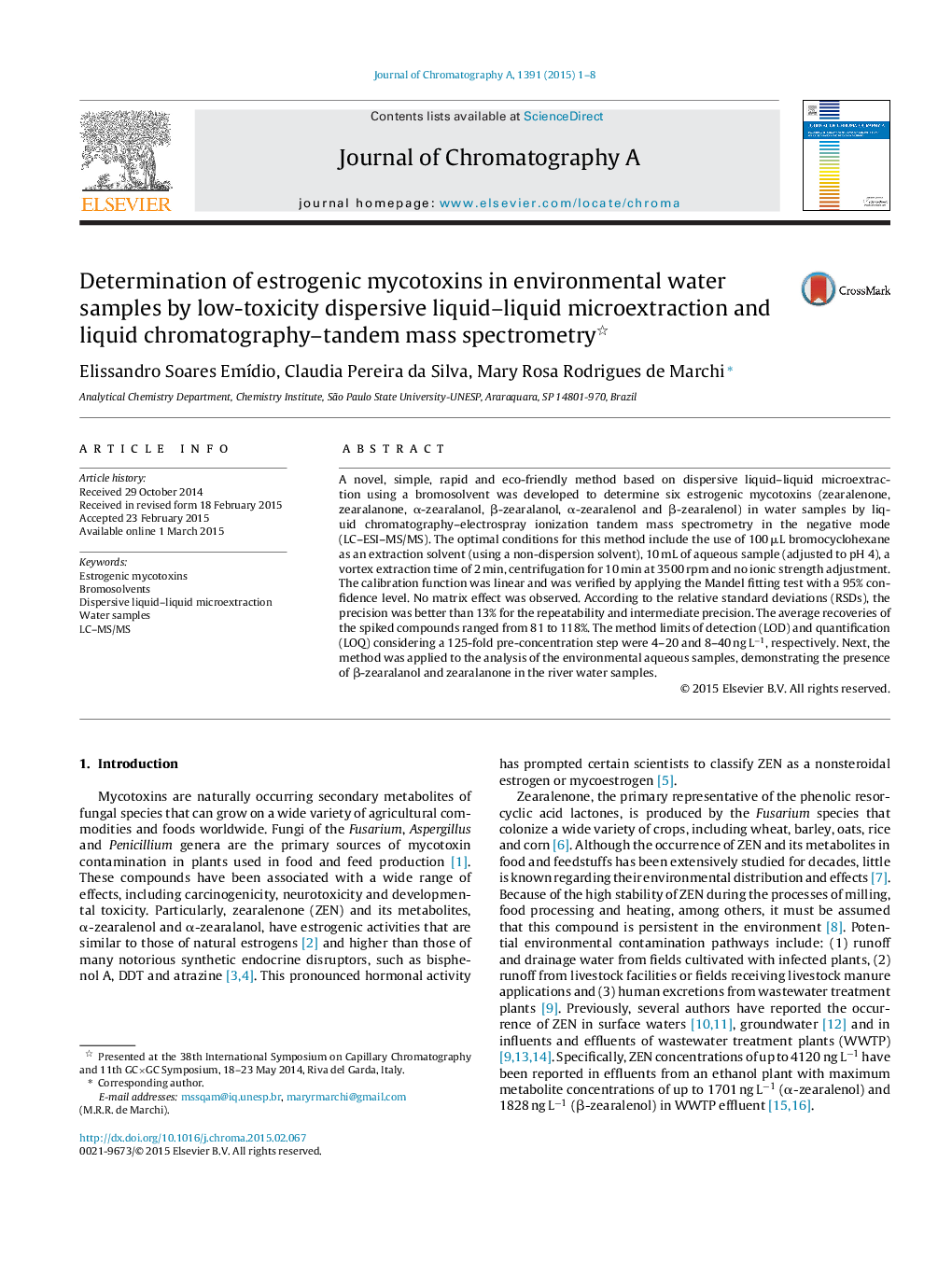| Article ID | Journal | Published Year | Pages | File Type |
|---|---|---|---|---|
| 1201656 | Journal of Chromatography A | 2015 | 8 Pages |
•DLLME method using low-toxicity solvent was proposed for mycotoxins determination.•Zearalenone and five metabolites are determined by LC–ESI–MS/MS, under optimized conditions.•10 mL water sample resulted in LOD ranging 4–20 ng L−1.•Brazilian river water samples presented two zearalenone metabolites (β-zearalanol and zearalanone).
A novel, simple, rapid and eco-friendly method based on dispersive liquid–liquid microextraction using a bromosolvent was developed to determine six estrogenic mycotoxins (zearalenone, zearalanone, α-zearalanol, β-zearalanol, α-zearalenol and β-zearalenol) in water samples by liquid chromatography–electrospray ionization tandem mass spectrometry in the negative mode (LC–ESI–MS/MS). The optimal conditions for this method include the use of 100 μL bromocyclohexane as an extraction solvent (using a non-dispersion solvent), 10 mL of aqueous sample (adjusted to pH 4), a vortex extraction time of 2 min, centrifugation for 10 min at 3500 rpm and no ionic strength adjustment. The calibration function was linear and was verified by applying the Mandel fitting test with a 95% confidence level. No matrix effect was observed. According to the relative standard deviations (RSDs), the precision was better than 13% for the repeatability and intermediate precision. The average recoveries of the spiked compounds ranged from 81 to 118%. The method limits of detection (LOD) and quantification (LOQ) considering a 125-fold pre-concentration step were 4–20 and 8–40 ng L−1, respectively. Next, the method was applied to the analysis of the environmental aqueous samples, demonstrating the presence of β-zearalanol and zearalanone in the river water samples.
